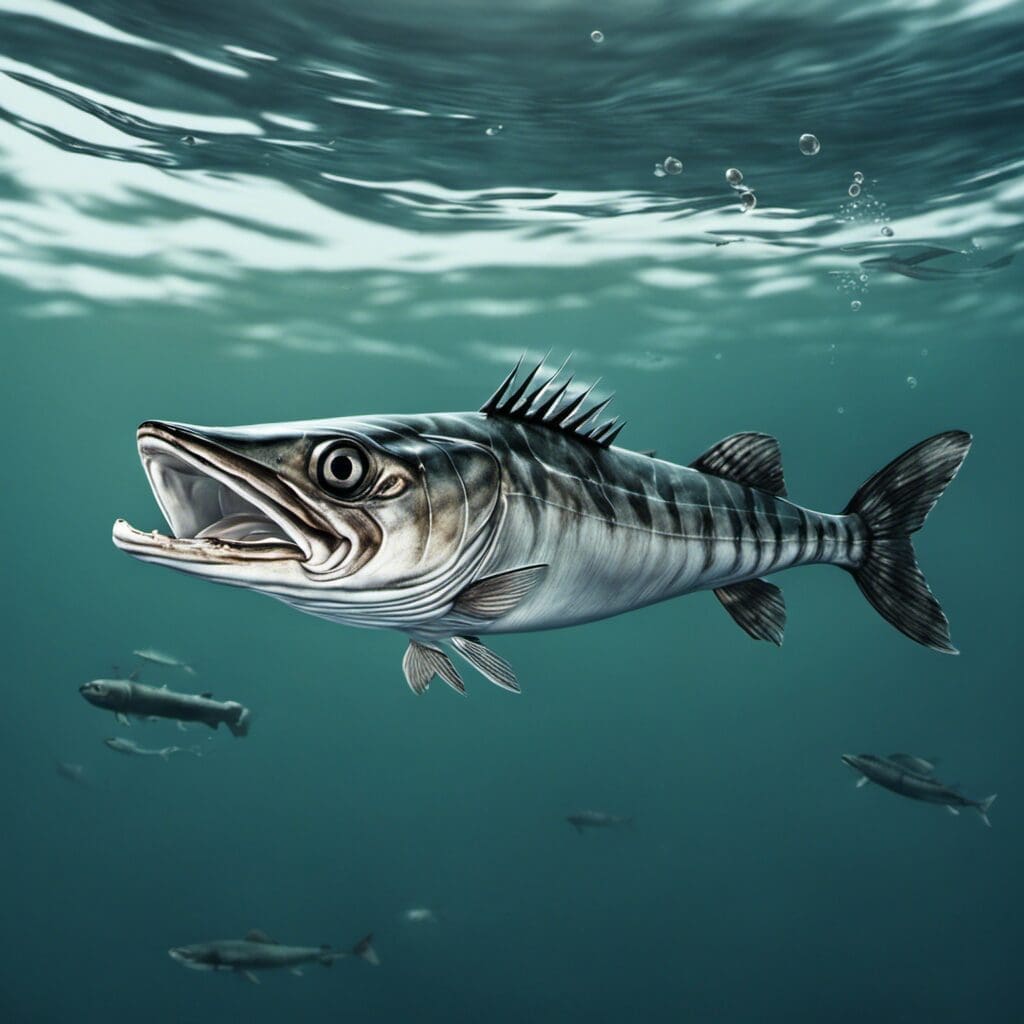Introduction
The Great Barracuda (Sphyraena barracuda) belongs to the Sphyraenidae family. Known for its aggressive behavior and voracious appetite, the Great Barracuda is an intriguing fish that holds a significant spot in the marine ecosystems.
Conservation Status
The current conservation status of the Great Barracuda is “Least Concern” as per the International Union for Conservation of Nature (IUCN). Conservation efforts for this species are not significant due to its global population stability.
Statistics
The Great Barracuda is a large marine species with impressive physical statistics.
| Stat | Average | Range |
|---|---|---|
| Length | 24-30 inches | 20-50 inches |
| Weight | 10-15 lbs | 5-35 lbs |
| Average Lifespan | 14 years | n/a |
Distribution
The Great Barracuda is widely distributed in the warm seas, from Massachusetts to Brazil, and even into the Pacific to Hawaii. They are known to roam both inshore and offshore areas. Migration patterns are rare amongst this species, with most remaining in the same areas year-round.
Habitats
- Water type: Saltwater
- Depth range: 0-100 feet
- Temperature range: 70-90°F
When and Where to See
Great Barracudas are primarily seen during the summer months when water temperatures are highest. They are active throughout the day and are often spotted near coral reefs and grass beds.
Best Fishing Locations
Top fishing locations include Florida Keys, Bahamas, Gulf of Mexico, and the Caribbean. The best fishing techniques include trolling with lures or baited hooks, as well as casting and spearfishing.
How to Catch
- Preferred bait or lures: Ballyhoo, Mullet, Pinfish
- Fishing techniques: Trolling, Casting, Spearfishing
- Best time for fishing: Summer months during high tide
Identification Guide
The Great Barracuda is easy to identify with its torpedo-shaped body, sharp, long teeth, and silver-gray to dark green coloration. Compared to other species, Great Barracudas are larger and more aggressive.
Culinary
The Great Barracuda’s meat is known for its firm texture and sweet, mild flavor. It can be grilled, baked or smoked. However, consumption should be limited as larger specimens can cause Ciguatera poisoning.
Additional Information
The Great Barracuda feeds primarily on smaller fish. Threat to the species includes accidental capture in commercial and recreational fisheries. The Great Barracuda holds cultural significance as a potent symbol in some native cultures due to its ferocity and strength.
References and Further Reading
More information can be found on various resources dedicated to marine species and fishing. Books like “Marine Fishes” by Scott W. Michael and “The IGFA’s 101 Freshwater Fishing Tips & Tricks” can provide a wealth of further reading.

